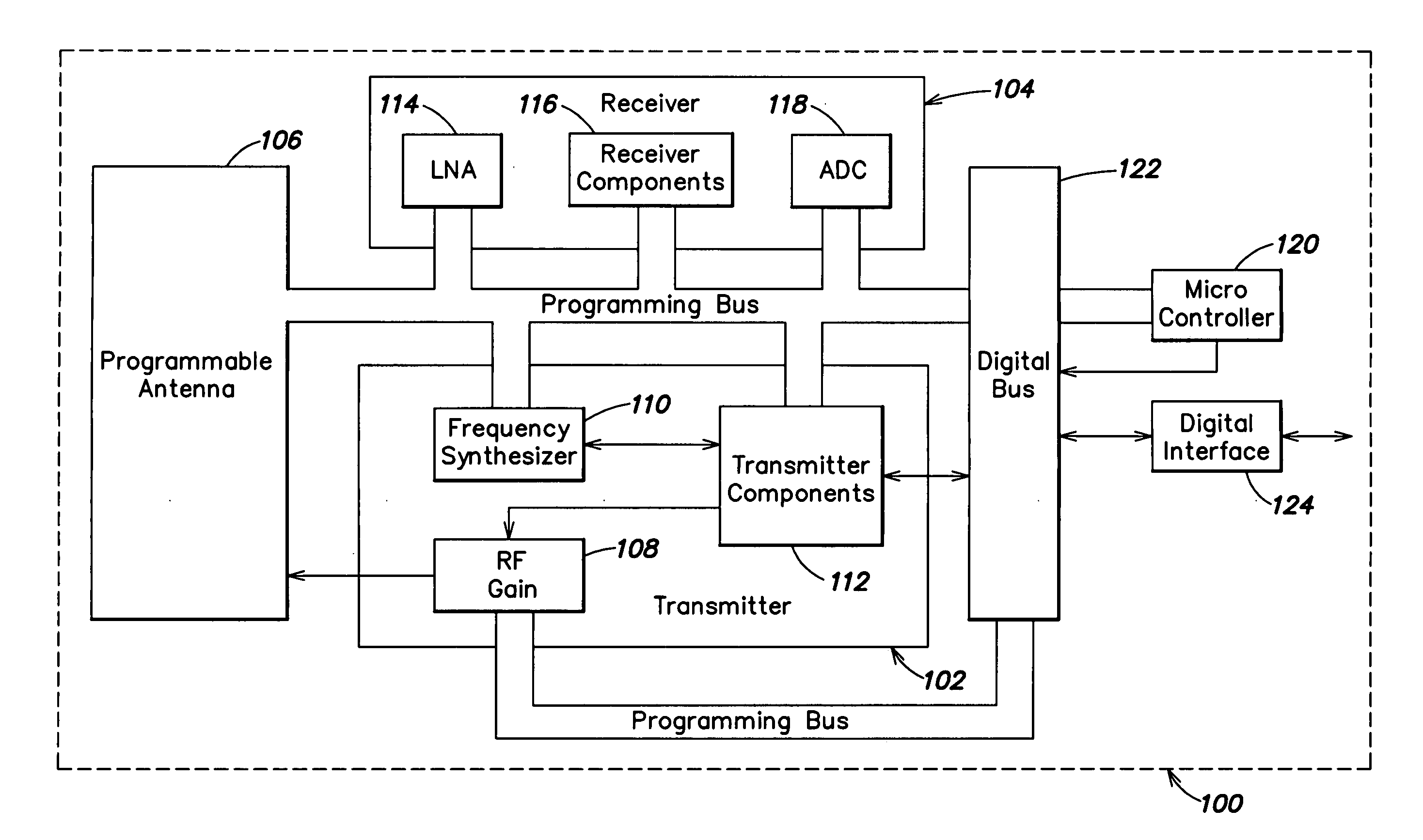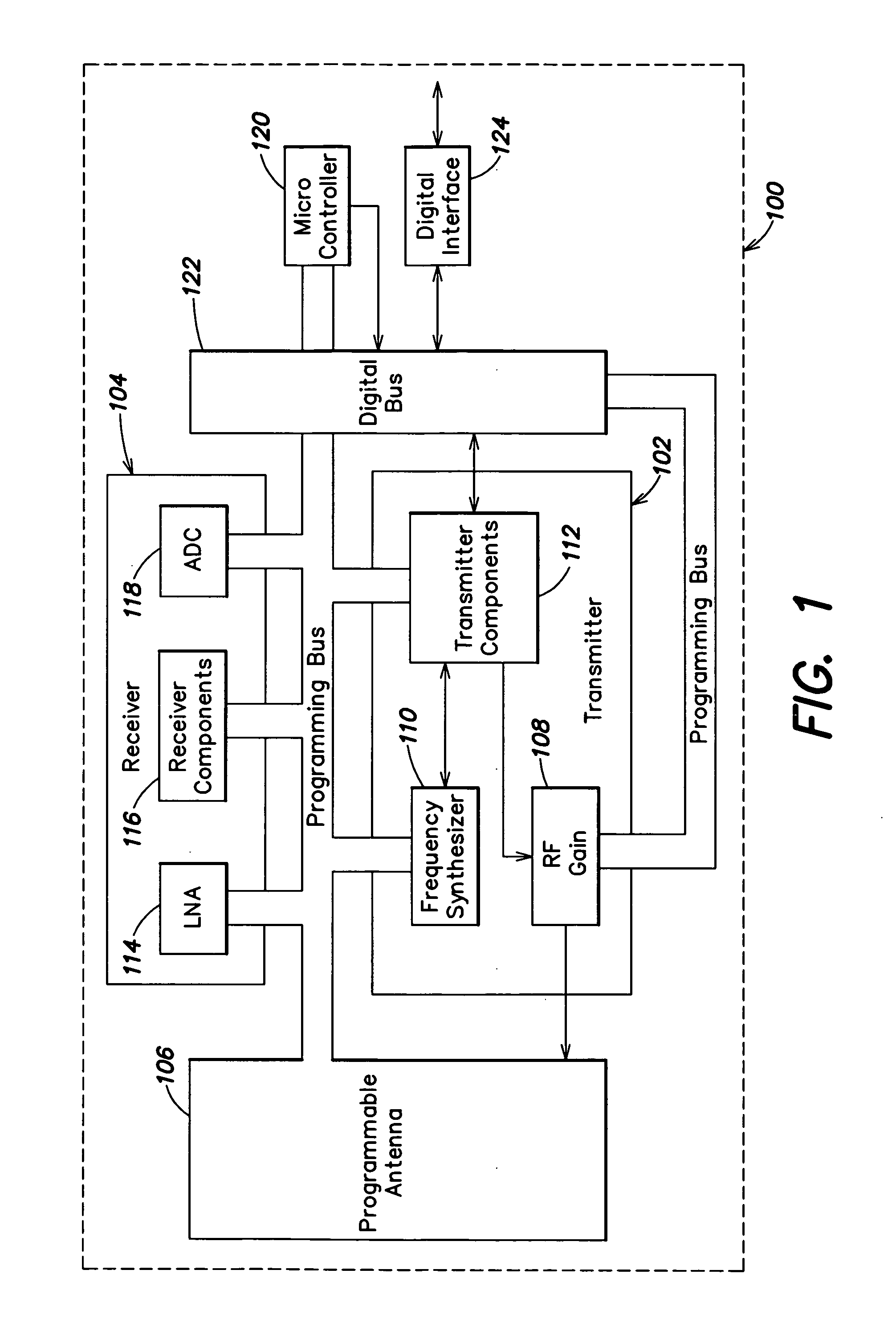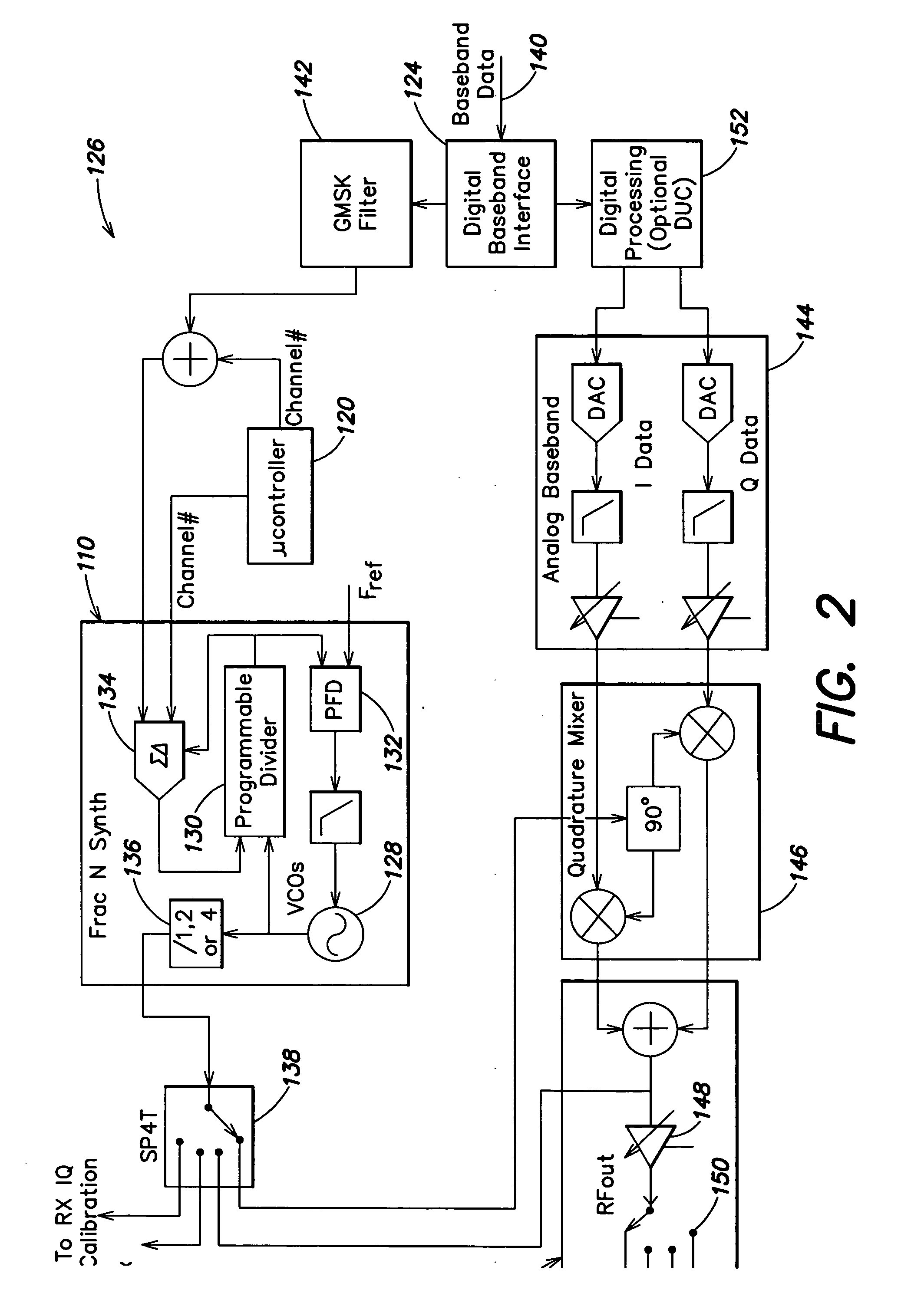Programmable transmitter architecture for non-constant and constant envelope modulation
a transmitter and non-constant envelope technology, applied in the field of programmable transmitters, can solve the problems of circuits suffering from several drawbacks, signal distortion, and inability to meet the requirements of continuous envelope modulation bandwidth efficiency, and achieve the effect of great versatility and easy fabrication
- Summary
- Abstract
- Description
- Claims
- Application Information
AI Technical Summary
Benefits of technology
Problems solved by technology
Method used
Image
Examples
Embodiment Construction
[0022]Aspects and embodiments of the invention are directed to a programmable transceiver architecture that allows both constant and non-constant envelope modulation. The circuit implementation of constant and non-constant envelop modulation circuits traditionally requires two separate, distinctly different implementation approaches, including separate frequency synthesizers or phase locked loops (PLLs) for each modulation schemes. As a result, many prior art transceivers are capable of supporting only one type of envelope modulation (i.e., either constant or non-constant, but not both), or require multiple chipsets (e.g., multiple frequency synthesizers or phase-locked loop circuits) to accommodate different modulation schemes. For example, U.S. Pat. No. 6,747,987 (which is herein incorporated by reference) describes a multi-protocol, multi-band transmitter architecture that supports both constant and non-constant envelope modulation, but requires a second PLL to generate an offset...
PUM
 Login to View More
Login to View More Abstract
Description
Claims
Application Information
 Login to View More
Login to View More - R&D
- Intellectual Property
- Life Sciences
- Materials
- Tech Scout
- Unparalleled Data Quality
- Higher Quality Content
- 60% Fewer Hallucinations
Browse by: Latest US Patents, China's latest patents, Technical Efficacy Thesaurus, Application Domain, Technology Topic, Popular Technical Reports.
© 2025 PatSnap. All rights reserved.Legal|Privacy policy|Modern Slavery Act Transparency Statement|Sitemap|About US| Contact US: help@patsnap.com



